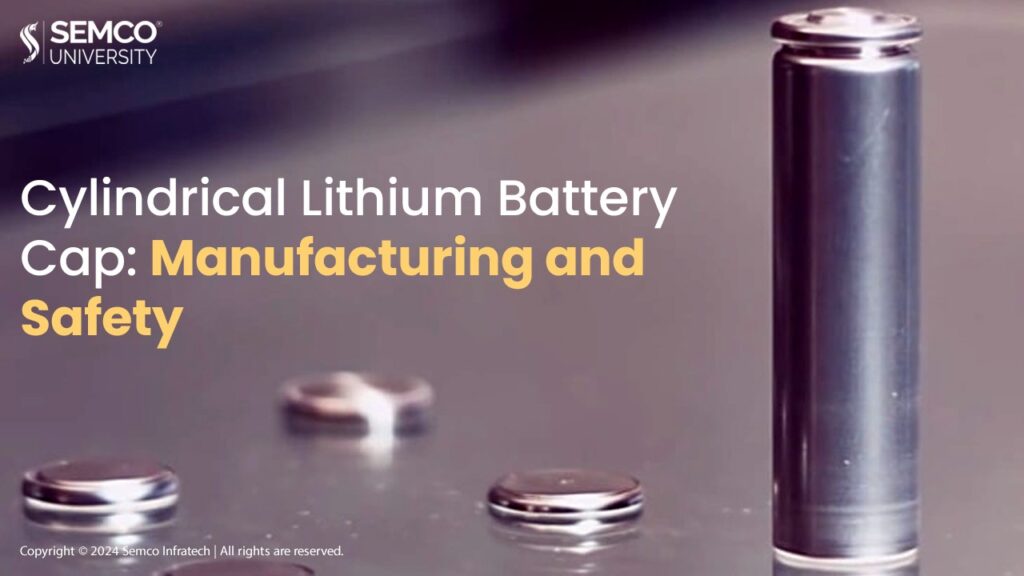Cylindrical lithium batteries are popular for their efficiency, lifespan, and compact size. But their safety hinges on a crucial component: the cap structure. This article dives into the manufacturing process of cylindrical lithium battery caps, highlighting key precautions for reliable and safe batteries.
The Cap and Its Components:
The cap, typically made of metal or plastic, seals the cylindrical battery. It houses critical safety features:
- Upper Cover: This protects the internal structure and acts as the electrical connection point. It has designated areas for the thermistor and current cutoff mechanism.
- Working Current Cut-Off Mechanism: This crucial safety component severs the current during overheating or overcharging, preventing damage and fire. Made of conductive and corrosion-resistant metals like aluminum or magnesium, it’s welded to the bottom plate and positioned between the thermistor and upper cover step.
- Thermistor: This temperature-sensitive component monitors battery operation. If the temperature rises abnormally, the thermistor reacts, triggering the current cutoff mechanism to stop the battery’s current. It’s placed between the upper cover step and the current cutoff mechanism, ensuring good contact with both.
- Bottom Plate: This metal plate forms the other end of the battery, supporting the internal structure. It’s welded to the current cutoff mechanism for electrical connection.

Manufacturing Considerations:
- Material Quality: Stringent standards govern the cap’s materials. The current cutoff mechanism’s metal alloy needs excellent electrical conductivity, corrosion resistance, and mechanical strength. Similarly, the thermistor’s performance parameters must meet design requirements.
- Precision Welding: Welding connects various cap components. Reliable welds are essential to prevent defects like false or missing welds. The current cutoff mechanism’s weld to the base plate must be strong and conductive.
- Assembly Accuracy: Precise positioning of components is crucial. The thermistor, current cutoff mechanism, and others must be in their designated upper cover locations. Consistent gaps between components prevent performance degradation or safety issues.
- Working Environment: Temperature, humidity, and cleanliness significantly impact quality. Excessive temperature, humidity, or contaminants can compromise the product. Maintaining a stable and suitable working environment is vital.
- Safety Procedures: High temperature, high pressure, flammability, and explosion are potential hazards during cap structure production. Strict adherence to safety operating procedures is crucial to prevent accidents.
- Quality Control & Testing: Rigorous quality checks and reliability testing happen throughout and after production. This includes visual inspection, electrical performance testing, safety performance testing, and more. Each battery must meet quality and safety standards.
- Environmental Protection: Eco-friendly materials and processes are preferred to minimize waste generation. Unavoidable waste disposal must comply with regulations to safeguard the environment and human health.
Conclusion:
Manufacturing cylindrical lithium battery caps is a meticulous process. From material selection and welding to assembly, environment control, and quality checks, every step demands strict attention. Only through such control can we ensure the safety and reliability of cylindrical lithium batteries for various applications.

